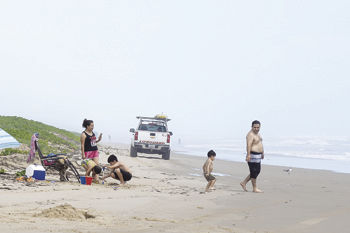HARLINGEN — Harlingen and McAllen received their first official rainfall in the month of August yesterday, kicked up by the remnants of Hurricane Franklin.
Official totals recorded at the cities’ airports were 0.6 inches over 24 hours for Harlingen, and 0.55 inches for McAllen.
McAllen continues to be unusually dry for the year, and even a half-inch of rain was welcome. For Harlingen, rain in late July helped it reset its precipitation debt for the year and put the city within an inch of its historical average at 11.73 inches.
McAllen has recorded just 6.78 inches of rainfall for the year, which is barely above half its average total of 11.84 inches.
Brownsville received 0.8 inches of rain yesterday, and has made progress in leveling its rain shortage for the year. Brownsville now has recorded 12.63 inches of precipitation for the year, just under its average precipitation total of 12.95.
The caveat to all this is the rainfall coughed up by what remained of Hurricane Franklin was erratically distributed. Many areas of Harlingen and McAllen received more rainfall than the official total, and some areas received less.
“What we saw yesterday was we had a large amount of moisture basically coming from Hurricane Franklin, said Jason Straub, meteorologist at the National Weather Service in Brownsville.
“While we didn’t see the storm itself we were getting little outflow boundaries from little storms that would pop up mainly across the gulf and they would sweep into the land areas over the course of the day.”
“It was very sporadic in nature but any area that did see some rain saw some heavy rain, good useful rain,” Straub added yesterday.
Straub said it appeared one of these little storms may have “gone past the western side of Harlingen and missed the eastern side.”
“One outflow boundary drove through Brownsville, and the whole city got rain,” he said. “I had to drive home through it.”
For McAllen, the persistent high pressure sitting over West Texas and northern Mexico has continued to depress moisture in that area of the Rio Grande Valley.
“The moisture has been settling more on the coast this year,” Straub said. “The McAllen area and the western Valley have seen the drier, more desert-type air from Mexico rather than the moist, tropical air from the gulf.”




